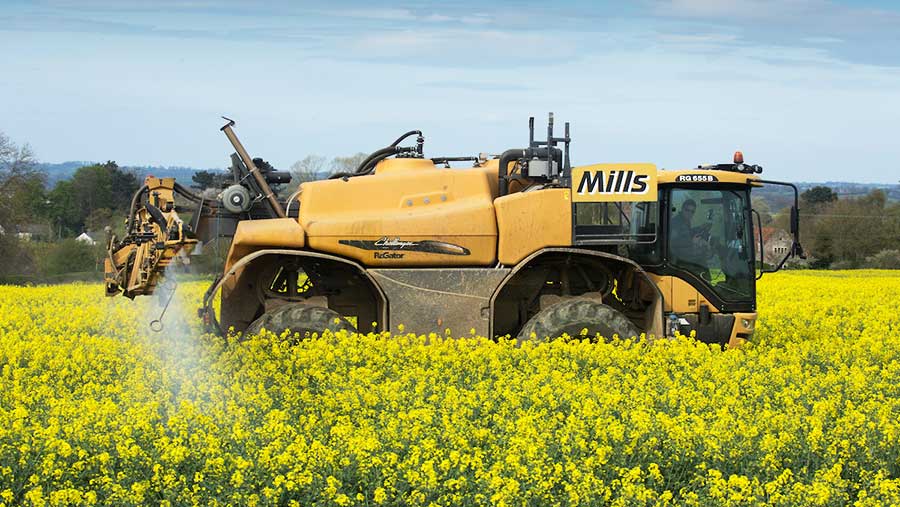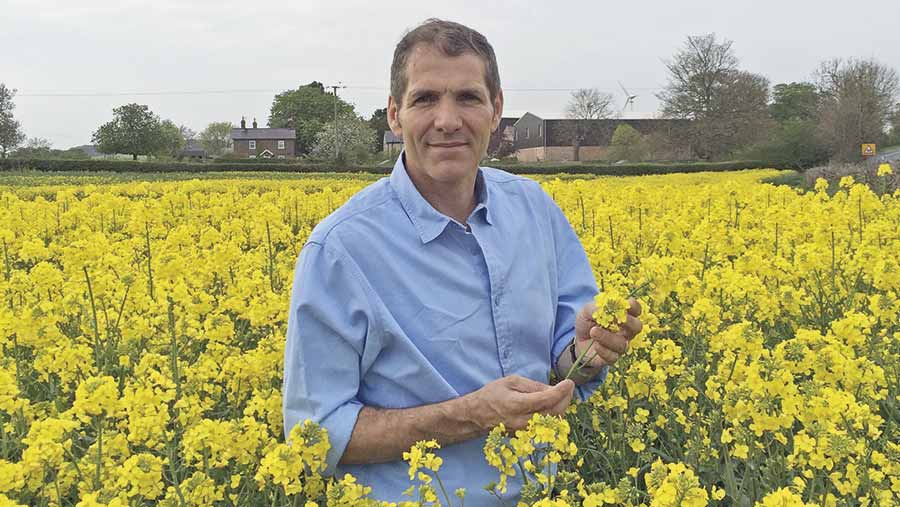How growers can help protect pollinators with web tool
 © Tim Scrivener
© Tim Scrivener A smartphone and computer tool that allows farmers to notify beekeepers without needing their contact details is offering a simple way so send out alerts ahead of insecticide applications.
The system, called Beeconnected, allows beekeepers to be notified without a farmer having to even pick up the phone ahead of getting out in the field.
Run by pesticide lobbying organisation the Voluntary Initiative, the system allows beekeepers to take action to keep bees away from freshly sprayed fields, limiting any potentially harmful effects.
See also: How encouraging bees can lift crop yields by a third
Once a farmer has registered their fields on the tool, they can simply log in on a computer or smartphone and select the fields that are going to be sprayed, give details of when they are going to spray them and specify the spray they will be using.
Similarly, beekeepers can register the locations of their hives, and the service then notifies them with an email when fields in the vicinity of their hives are due to be sprayed.
Beekeepers can set the maximum distance between a hive and a spraying event that they want to be notified about, up to 5km. They then decide what action, if any, they want to take.
The website service will also provide relevant information from the British Crop Production Council’s Pesticide Manual to help with decision-making.
Paul Temple, chairman of the Voluntary Initiative and the AHDB cereals and oilseeds sector board, is putting the scheme into practice on his 310ha farm in the Yorkshire Wolds.

Paul Temple
“A lot of what we have to do as farmers is take the office time out of the office,” he says, explaining that, once fields have been registered, spray operators can notify beekeepers without even having to go into the office.
“There is no better time than the bitter months of winter to sit down and get your fields registered on the database,” says Mr Temple.
“By the time you have had a coffee, you will be well on your way.”
He says the tool simplifies the existing requirement for Farm Assured growers to notify beekeepers 48 hours in advance by phone.
This approach is less effective (and more time-consuming); the tool will mean fresh operators or beekeepers can be connected without even knowing each other.
And this feature can be particularly useful for farmers who are concerned about giving away their phone number or identity, as the tool keeps user identities anonymous for both parties.
To sign up for the tool go to the BeeConnected website.
What else can farmers do to promote pollinators?
Taking steps to limit the effect of insecticides on friendly pollinators is just the start of what farmers can do to help improve insect numbers in their crops.
And while this is worth doing simply to preserve as many species as possible, some data suggests it could also have a beneficial effect on the yields of flowering crops, such as oilseed rape.
Ivor Davis, former president of the British Beekeepers Association, says the best thing farmers can do to help bees is improve the variety of plants on their farms.
This will prolong the time that food sources are available on farms, as well as ensuring that all their required nutrients are on offer.
“There is no one plant that provides all of the amino acids that a honey bee requires,” Dr Davis explains, so even if a grower has large fields, gleaming with oilseed rape in flower, they will still need other food sources.
This can be done in a variety of ways, including:
- Having a more varied crop rotation and planting cover crops between cash crops. This will increase the number of flowering plants and provide nutrition at different points in the season.
- Leaving headlands wild and seeding them with bee-friendly plants such as clover. This will also allow corridors for bees to cross monocropped landscapes such as big areas of wheat, where no food would otherwise be available.
- Planting trees in unproductive areas of the field. Flowering trees will provide a large additional source of nectar and pollen. There are grants on offer to help farmers with the cost of doing this.
- Putting hedgerows back in with a variety of plants. Hedgerows also allow more opportunities for pollinators to criss-cross the landscape, and plants such as blackthorn and hawthorn will also provide an excellent food supply. Dr Davis says that ideally this should be done by dividing up large fields as well, but he acknowledges that it clashes with the efficiency savings gained from having fewer fields and larger machinery.
- Not cutting hedgerows too low. Allowing hedgerows to grow taller and broader will increase the amount of food they can offer and also allow more room for other plants to grow.
- Allowing some less-competitive weeds to grow in crops. Tolerating plants that are growing in the base of a crop and are not detrimental to yield is another way of allowing pollinators to browse in fields that otherwise would be barren of any food.

